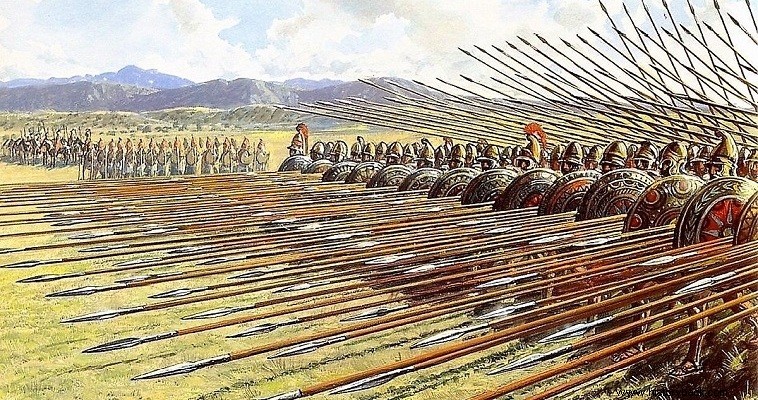
The two great Hellenistic kingdoms of the Seleucids and the Ptolemies clashed for years over the conquest of the so-called Hollow Syria which included the territories of today's Syria and Lebanon. These six conflicts, known as the Syrian Wars, began in 274 BC. and lasted until 168 BC. with breaks absorbing the vital forces of the two kingdoms and serving the supremacy of Rome.
In 219 BC the Fourth Syrian War broke out . At that time on the throne of the Seleucids was Antiochus III the so-called "Megas" and in that of the Ptolemies Ptolemy IV Philopator.
In 217 BC the two kings had massed their armies in Syria in preparation for the decisive conflict. The Seleucid army was encamped at Rafia, near today's Rafa, about 30 km south of Gaza. Ptolemy camped at a distance of only 1 km from the enemy.
As expected rival factions clashed almost daily. Then Theodotus the Aetolos, a former Ptolemaic mercenary now in the service of Antiochus, attempted to infiltrate the Ptolemaic camp with the intention of killing Ptolemy, but failed.
Opposing forces
Antiochus had assembled an imposing army, the core of which was the 10,000 elite Argyraspides his sarissaphoros, under Theodotus. He had 20,000 more Greek sarissaphoros under Nicarchus and Theodotus Hermiolius, 22,500 Oriental light infantry (Lydians, Medes, Arabs, Cilicians, Daesians, Persians), 2,000 fine archers and slingers and Arian spearmen, 2,000 Thracian peltasts, 2,500 Cretans and Neo-Cretans (descendants of Cretan settlers) archers, 5,000 Greek mercenaries – probably elite shield-bearing peltasts – 6,000 horsemen and 102 Indian war elephants.
Ptolemy, for his part, had 3,000 elite sarissaphorios (Agema) under Eurylochus of Magnesia, 2,000 peltasts under Socrates of Boeotus, 25,000 Greek sarissophorios, 8,000 Greek mercenaries, 3,000 Cretans and Neo-Cretans, 3,000 Libyan light infantry, 20,000 Egyptian sarissophorios, 6,000 Thracian mercenaries and 50 Gauls. 73 African elephants, smaller than the Indian rivals. Ptolemy excelled in infantry and especially in charioteers, he was inferior in cavalry and elephants.
Massacre on the plain
After five days of minor skirmishes the two armies faced each other ready for battle. Both armies ordered their phalanxes of skirmishers in the center of their formation, flanked by the light divisions with the cavalry at the ends. The elephants marched in front of the light infantry covered by divisions of light infantry.
The battle began with the clash of the elephants of the two armies in which the most and largest Indian elephants of Antiochus prevailed. The panicked African elephants fell upon the friendly light infantry, confusing it. At the same time Antiochus, at the head of his cavalry of the right wing, rushed forward pressing the enemy.
Ptolemy immediately put himself at the head of his sarissaphoros and attacked the center where he had the upper hand. But the cavalry of Ptolemy's right wing also managed to prevail over the opposing cavalry. At the same time, Antiochus was disbanding the Ptolemaic wing opposite him.
Antiochus believed he was victorious. But in the center the strongest Ptolemaic phalanx prevailed, and the Ptolemaic cavalry of the right wing fell on the side of the opposing phalanx. Antiochus tried to stop the destruction but it was too late. His men had fled.
The losses of the Seleucids were heavy. About 10,000 infantrymen and 300 horsemen fell in the battle. Another 4,000 men were captured. Five elephants were also killed. On the other hand, Ptolemy's army lost 1,500 infantry, 700 cavalry and 16 elephants.
With this victory he won Hollow Syria until 200 BC. That year, with his victory in the battle of Panios, Antiochus turned the situation around and won back the Hollow Syria for the Seleucids.
